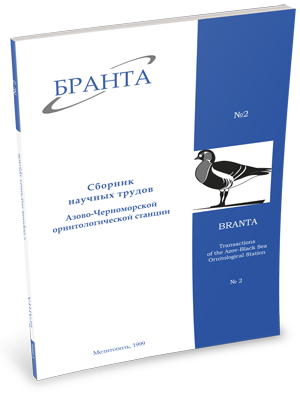
Transactions
of the Azov-Black Sea Ornithological Station



Indirect method of calculating egg volume in coloniallv breeding Charadriidae
Chernichko I.I., Chichkin V.N.
Specific volume indices were determined based on direct measurements of linear dimensions (n ~ over 1000) and volume (n — over 700) of eggs. The data concern 16 species among which colonial Charadriidae predominate. Due to the time limit during a visit to a large colony it is often possible to take only linear measurements of eggs. Volume of eggs can be further determined (Barth, 1953; Hoyt, 1979 and others) using average index 0.509. To take into account species dependant and local variability of this coefficient we undertook a special analysis (table 1). For the majority of Charadriidae with pear-shaped eggs usage of the averaged index resulted in errors varying in the range of 10-18%. Overall error decreases if it is replaced by species specific indices. Such more precise indirect estimates of egg volume help to determine the incubation stage and hatching date in eggs with known mass (Table 2). Options in application of volume index as a mathematical interpretation of egg shape are also discussed. Deviation of the egg volume which was measured directly from one calculated on the basis of species specific indices and linear dimensions can be expressed as variation in egg volume indices. According to our observations the index reflected even the smallest fluctuations in their shape and volume which were likely to be the function of feeding conditions, breeding terms, age of female, or position of nest and the colony.
Read the paper in a PDF file